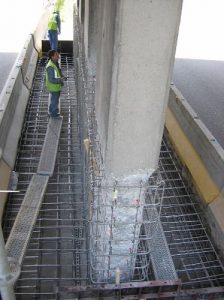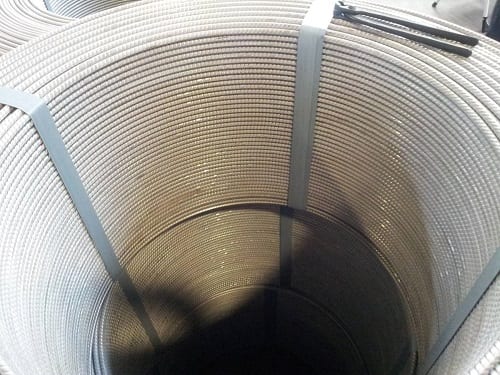The France based steel manufacturer Ugitech produces billets, bars, wire rod and drawn wire. Now the company told that it invented innovative special steel solutions to meet the demands of the construction industry. As the steel producer report, the UGRIGRIP rebar demonstrates its advantages best in structural and civil engineering projects and in building construction.

Concrete pillars, source: Ugitech
Used to reinforce concrete, it can be used for lighter weight elements and structures. Thinner, more intricate aesthetically appealing concrete structures can thus be designed because the diameter of the steel bars used can be minimized.
For solutions that focus more on energy savings, the special steel UGI is used for anchoring and connecting elements, sandwich elements in facades and roofs as well as thermal connectors between balconies and floors. According to the steel producer the steel’s thermal conductivity is 3-4 times lower than that of conventional carbon steels on the market and attests to its good heat insulation.
With a yield point of 650-800 MPa, the steels are more resistant to tensile loads than carbon steel or the standard steel materials 304 and 316. With their improved ductility, they also comply with class C of the EUROCODE 2 for seismic loads.
“The unique properties of UGRIGRIP und UGI extend the useful lifetime of building constructions by up to 50 years,” explains Olivier Jourdan, Market Manager Architecture, Building and Construction at Ugitech. “This reduces the maintenance effort – a significant advantage particularly for parts of a structure with difficult access points. The construction industry thus profits from lower project and lifecycle costs.”

















